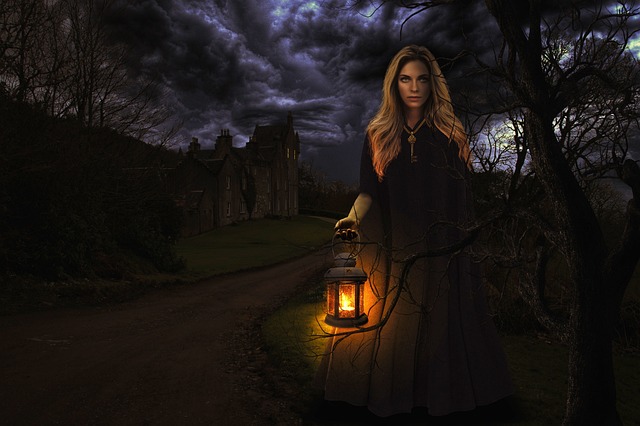
In fantasy literature, where enchanting worlds materialize and mythical creatures roam, the success of any story hinges upon the strength of its characters. It is through these captivating individuals that readers embark on extraordinary adventures, immersing themselves in a tapestry of magic and wonder. But what makes a character truly memorable? How can authors conjure figures that resonate within the hearts and minds of readers?
Creating indelible fantasy characters is an art form in itself, an alchemical mix of imagination, empathy, and deft storytelling. They must possess the power to transport us to realms beyond our wildest dreams, while simultaneously grounding us in relatable human emotions. Simplicity in language is the key to unlocking the potential of these characters, for even in the most fantastical of settings, it is the familiarity and authenticity of their experiences that allows readers to form profound connections.
The Importance of Character Development in Fantasy
In the world of creating memorable fantasy characters, character development plays a crucial role. These characters are the heart and soul of fantasy stories, and their growth and depth are essential for a compelling narrative.
The Role of Characters in Driving Fantasy Narratives
In fantasy literature, characters are the driving force behind the stories. Whether heroes on epic quests or complex villains with hidden agendas, characters push the plot forward.
Their decisions, struggles, and transformations engage readers, making them emotionally invested in the tale.
Relatable and Compelling Characters
Readers are drawn to stories with characters they can relate to or find captivating. Characters act as a bridge between the fantastical elements of the story and the reader’s own experiences.
Relatable characters evoke empathy and understanding, while compelling characters keep readers eagerly turning the pages.
The Impact of Memorable Characters
Memorable characters are a hallmark of successful fantasy stories. They leave a lasting impression on readers’ minds and often become iconic figures in the genre.
Well-developed characters are the elements that readers carry with them, making the story unforgettable and encouraging them to explore more fantasy worlds.

Character development is paramount when it comes to creating memorable fantasy characters. These characters are not just participants in the narrative; they are the catalysts that drive the story, making it engaging and emotionally resonant. As readers connect with and invest in these characters, the story becomes more than just words on a page; it becomes a memorable journey into a fantastical world.
Building Multidimensional Characters
Creating memorable fantasy characters often involves building multidimensional personas with depth, complexity, and relatability. These characters are the heart of the story and hold the power to captivate readers.
Multidimensional characters have layers to their personalities, motivations, and experiences. They feel like real individuals rather than one-dimensional stereotypes.
Readers connect with multidimensional characters because they can see shades of themselves in these personas.
Creating Complex and Relatable Protagonists and Antagonists:
Protagonists and antagonists are the main characters who drive the story. Creating complexity in these characters involves giving them both strengths and weaknesses.
Protagonists may have flaws, while antagonists may possess redeeming qualities. This complexity makes them relatable and keeps readers engaged.
Flaws, Virtues, and Character Arcs
Flaws and virtues are the building blocks of multidimensional characters. Flaws make them relatable and human, while virtues provide moments of inspiration and heroism.
Character arcs, the transformation and growth characters undergo throughout the story, add depth and relatability. Readers love to see characters evolve and learn from their experiences.
Creating Memorable Fantasy Characters Through World-Building
World-building is a crucial element in creating memorable fantasy characters. The fantastical worlds characters inhabit influence their personalities, motivations, and relationships, making the characters and their stories come alive.
Characters in fantasy literature are shaped by the worlds they live in. These worlds are often rich with magic, unique cultures, and distinctive histories. The rules and norms of these fantastical realms affect characters’ beliefs, values, and behaviors, making them a product of their environment.
The Influence of Setting, Culture, and History
Fantasy settings, whether lush forests, ancient castles, or sprawling cities, create specific atmospheres that impact characters’ experiences and outlooks.
The cultures and histories within these worlds define characters’ identities and motivations. For example, a character from a seafaring culture may have a different perspective and set of skills compared to one from a mountain-dwelling society.

Many authors use world-building to develop multidimensional characters. They infuse the details of their worlds into characters’ backgrounds and storylines.
For instance, a character’s quest may be intricately tied to the history or magic of their world, creating a deeper connection between the character and the setting.
In the creation of memorable fantasy characters, world-building is a vital factor. The worlds characters inhabit impact their beliefs, behaviors, and motivations, adding depth and authenticity to their personas. Weaving setting, culture, and history into character development lets authors breathe life into their characters and transport readers to captivating and immersive fantasy realms.
Tips for Creating Unique and Memorable Fantasy Races
Creating fantasy races that stand out and captivate readers requires careful consideration, creativity, and attention to detail. These tips can guide authors in crafting races that enrich the world and characters in their fantasy narratives.

- Draw Inspiration from Real-World Sources: Many well-crafted fantasy races find their inspiration in real-world cultures, mythologies, or ecosystems. Look to history, folklore, or the natural world for ideas. For instance, you can draw from Norse mythology for dwarves or African folklore for mythical creatures.
- Develop Distinctive Appearances: One of the most apparent aspects of a fantasy race is its physical appearance. Consider unique features such as skin color, size, hair, and any other distinguishing characteristics. These should reflect the race’s environment and culture.
- Create Culturally Rich Societies: Give each race a complex and internally consistent culture. This includes religion, traditions, rituals, clothing, and art. How do they interact with their environment? What are their values and taboos?
- Invent a Language or Dialect: Language plays a significant role in a culture. Design a language or dialect for your race, even if you don’t delve into its grammar and vocabulary in your story. It adds authenticity and depth to the race.
- Consider Unique Abilities or Powers: Many fantasy races have special abilities or powers that set them apart. Think about how these abilities connect with their culture and environment. How do these powers affect their interactions with other races?
- Explore Social Structure and Hierarchies: Define the social structure of your race. Are they organized in clans, tribes, or kingdoms? Who holds power, and how is it maintained? These factors influence how individuals within the race interact.
- Think About Their History and Origin: A race’s history can shape its present and future. Develop a compelling backstory that explains their origins, significant events, and any conflicts with other races. These historical elements can drive the plot and character motivations.
- Consider Relationships with Other Races: How do these fantasy races interact with other races in your world? Do they form alliances, engage in trade, or harbor centuries-old rivalries? These relationships add depth and conflict to your story.
- Subvert Stereotypes and Clichés: While it’s fine to draw inspiration from existing tropes, consider subverting them to create a fresh perspective. Challenge traditional stereotypes associated with fantasy races, providing readers with a new and intriguing view.
- Test the Race’s Role in the Story: Finally, consider the narrative role of your fantasy race. What do they bring to the story? How do they affect the plot and character development? Make sure they serve a purpose beyond mere window dressing.
With these tips, you can create fantasy races that are not only unique and memorable but also integral to the richness and depth of your fantasy worlds and characters. These races enrich the storytelling experience and make the fantasy narrative all the more captivating and immersive.
The Influence of Archetypes and Subversion
In the creation of fantasy characters, two storytelling techniques play a pivotal role: archetypes and their subversion. These tools help authors craft characters that feel both familiar and fresh, captivating readers along the way.
1. Understanding Archetypes:

In the world of storytelling, archetypes are like blueprints for characters. They’re familiar character types that have been used across many stories. Think of them as templates that give you a starting point for creating characters.
Archetypes help authors because they set up expectations for readers. Readers recognize these character types, which can make it easier for them to understand the story.
2. The Power of Subversion:
Now, subversion is where things get interesting. Subverting archetypes means taking these familiar character types and giving them a twist. Authors add unexpected traits, actions, or plot developments that challenge traditional roles.
For example, you might have a character who seems like a villain but later reveals a kind heart. This subversion adds depth and surprise to the character.
3. Examples of Well-Known Archetypal Characters:
In fantasy literature, there are classic archetypes. The hero on a quest, the wise mentor, or the villain with sinister plans – these characters have well-defined traits and roles.
4. How Subversion Makes Characters Engaging:
When authors subvert archetypes, they breathe life into characters. It keeps the story fresh and exciting. Readers might think they know a character’s path, but subversion takes them on unexpected journeys.
A heroic character might face moral dilemmas, making them more relatable. A wise mentor might have a troubled past, adding complexity. A menacing villain might have a compelling backstory that evokes empathy.
5. The Balance of Familiarity and Freshness:
The key is to strike a balance. Archetypes provide a sense of familiarity that readers appreciate, but subversion adds the freshness that keeps them engaged.
This blend of the familiar and the surprising creates characters who feel both rooted in tradition and relevant to the present, making them truly memorable.
Creating memorable characters is an art form that enchants readers and transports them to extraordinary worlds. Through multidimensional personas, relatable flaws, and transformative character arcs, authors weave captivating narratives that resonate within the hearts and minds of readers. The power of world-building further enriches these characters, as fantasy settings, cultures, and histories shape their identities and motivations. The result is a tapestry of unforgettable characters that leave an indelible mark on readers, forever etching their names in the annals of fantasy literature.